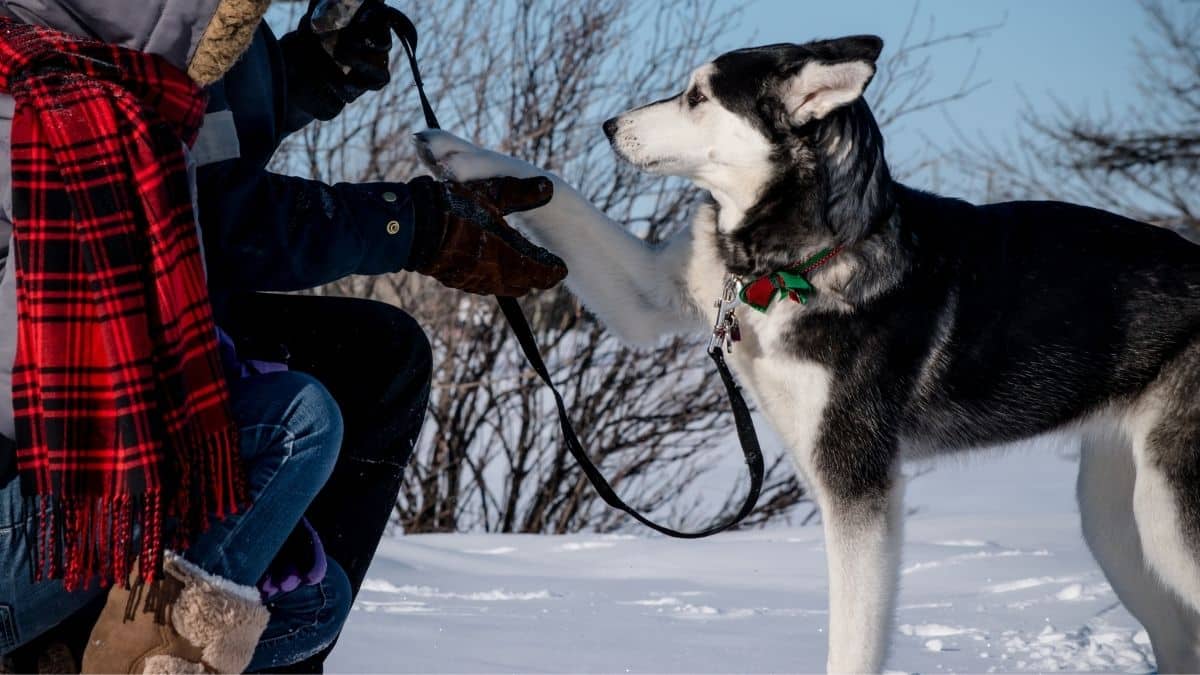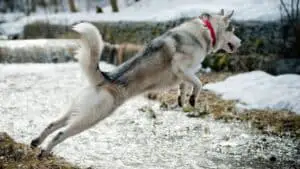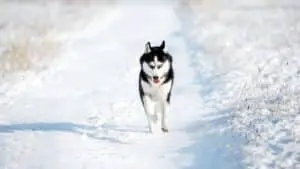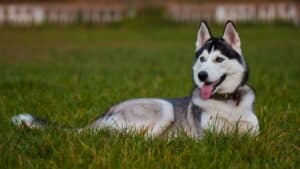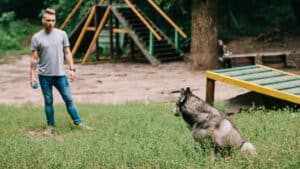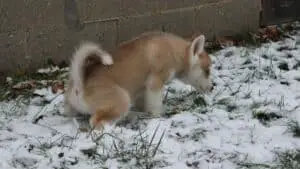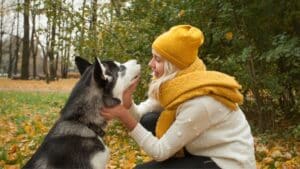5 Clever Tips To Train Your Siberian Husky
Taking on a family pet is a big commitment. When you bring a pet into your home, you are taking another being’s life into your care for the foreseeable future. In the case of a Siberian Husky, this could be anywhere between 12 and 15 years.
By arming yourself with a few key pieces of information about Huskies and taking the time to learn a few key tips and tricks, your life with your Husky will be long and happy. Husky owners should know the unique needs and requirements of their dogs, as well as their key behaviors and character traits.
In this article, we will cover everything from grooming and maintenance to training and exercise. We will also cover off the origin story of your young Husky pup; where he originally comes from, what he was originally bred for, and how this stinformation can help your experience with your Husky today.
Table of Contents
Siberian Huskies: Where do they come from?
As the name might suggest, Siberian Huskies were originally bred in the northeastern regions of Asia, in an area we would commonly refer to as Siberia today.
Huskies were bred as sled dogs, intended to carry heavy loads over long distances in the treacherous ice and snow. They were also intended as companion animals, so these energetic dogs have a friendly nature that makes them perfectly suited as a family pet.
Many of the natural instincts and tendencies that were bred into the first Siberian Huskies will be evident in your own Husky today. Huskies are pack animals and thrive on love and attention. They are also high energy dogs and will need vigorous exercise on a daily basis.
They also have a strong prey drive, which means that they will tend to chase after small animals that resemble prey if they are off-leash. Proper leash training can help curb this bad behavior – check out our leash training tips below for more information!
Your beloved Husky will also have one rather obvious genetic trait that you may have noticed: his thick, luxurious coat! Your Husky’s coat is actually incredibly important and requires the proper care and tools to keep it healthy and happy.
Training 101 for Husky owners
Huskies have a reputation as a breed of dog that likes to make their training difficult. This reputation may be somewhat undeserved, as Huskies will respond to a consistent, committed training program like any other dog.
It is certainly true, however, that Huskies have a strong independent streak and are extremely intelligent dogs. Unless you have fostered a strong, positive relationship with your Husky and have established clear consistent routines, you may indeed find training difficult.
Positive reinforcement all the way
Whether you are attempting crate training, teaching basic commands, training your Husky pup to walk off-leash, or instilling the basics of potty training, you will need to make consistent use of positive reinforcement.
Positive reinforcement is not about bribing your dog to do the right thing. Instead, it is all about encouraging certain good behaviors in your dog by showing that he will be rewarded for them.
With positive reinforcement, your dog is only rewarded once he has demonstrated the correct behavior. This reward might be effusive praise, his favorite treat, a game of fetch, or even an enthusiastic pat. The important thing is that, eventually, your Husky loves to do what you ask him to do, and only has positive associations with that behavior or command.
Crate training: is it right for my Husky?
When done correctly, crate training is a great training tool for your dog and has positive benefits for Huskies and Husky owners alike.
For your Husky, the crate can become a place of refuge and solitude in your home. He can retreat there whenever he feels the need for some me-time.
For Husky owners, an effectively employed crate can bring a whole host of benefits. It can assist with basic behaviors such as potty training and preventing your Husky from chewing your furniture. It can also encourage more complex good behaviors such as stopping your Husky from jumping on people and alleviating his separation anxiety.
To use your crate effectively, the following tips are helpful:
- Start using the crate from a young age, ideally as soon as you bring your Husky puppy home.
- Don’t keep your Husky puppy in his crate for too long – he won’t be able to hold his bladder!
- Don’t use the crate as a place of punishment – your Husky will come to fear and loathe it!
Commands, house training, and loose leash walking
To have any chance of a long, happy life with your Husky, you will need to have some of the more basic behaviors down pat. These include having a Husky pup that can respond to basic commands, that is fully house trained, and that can walk calmly by your side when on a leash.
Although all three of these behaviors will be taught in different ways, all three have the same two principles in common: use plenty of positive reinforcement and be consistent!
Our step-by-step guide to teaching your Husky pup basic commands should provide a good base for you and your pup to learn the ‘sit’, ‘stay’, ‘down’ and ‘come’ commands. It is important to note that you should only ever teach one command at a time so that your Husky puppy doesn’t become confused!
House training, although it can be unpleasant and require lots of patience, maybe one of the most important things you train your Husky puppy. Accept that the odd accident will occur, establish a routine, and learn to read your puppy’s body language, and you’ll find the potty training process will go much more smoothly than you could have hoped!
Loose leash walking might seem like a foreign concept to many Husky owners. These adventure-loving, athletic dogs are notorious for taking their owners for walks rather than the other way around! If you are able to establish the correct behaviors around walking on the leash from the time they are a puppy, you will find that going for a walk is much less a tug of war when they get older!
A basic step-by-step guide to teaching loose leash walking is below. All you’ll need is a long, sturdy leash, a buckle collar, and plenty of treats!
- When you are out for a walk, and your puppy starts pulling against his leash, stop, and take several steps backward.
- While you step backward, call your puppy in an upbeat manner and reward him when he comes to your side.
- Start walking again. Reward your puppy every few yards if he continues to walk calmly by your side.
- Repeat the above steps every time your puppy begins to pull at his leash.
By giving constant, positive feedback to your Husky puppy as to the correct leash behaviors, you will eventually be able to stop giving treats, and your puppy will walk coolly and calmly all on his own.
Grooming your Husky
Grooming your Husky’s thick, luxurious coat may seem a time and labor-intensive task at first glance, but it is actually relatively simple to take care of if you know what to do.
Firstly, invest in the right tools. You will need a slicker brush and a toothed comb. This is because your Husky has a double coat, which is essentially a two-layered coat that requires different tools and techniques depending on which layer you are grooming.
For your Siberian Husky’s woolly undercoat, you will need to use the toothed comb. It can penetrate past the thick guard hairs of the topcoat and prevent the undercoat from being matted. When grooming the undercoat, start from your Husky’s tail and comb in the direction of his head.
A slicker brush is best for the topcoat. Similar to a regular brush, it will smooth and detangle the hairs of the topcoat, getting rid of any dead hairs.
Ensure to groom your Husky on a regular basis. Once a week is generally enough, except when your Husky is going through the twice-annual ritual of shedding (or ‘blowing’) his undercoat.
When your Husky is blowing his coat, you will tend to find clumps of fur everywhere! This typically occurs during fall and spring, as your Husky sheds his seasonal undercoat in preparation for either winter or summer. You may need to give your Husky a daily once over with the undercoat rake during this time, and keep the vacuum cleaner close at hand!
When grooming a Siberian Husky, the most important thing to remember is that you should never shave your Husky. In fact, shaving may actually prove harmful to your dog.
Each of your Husky’s coat layers plays an important role in keeping him cool in warm weather, warm in cool weather, and protecting him from UV rays. Shaving your Husky in summer may cause a heat stroke, as his topcoat serves to keep him cool. As Siberian Huskies also do not have pigmentation on their skin, shaving him can result in sunburn.
Exercising your Husky
Huskies are naturally athletic, high energy dogs. As such, you need to ensure that you are engaging your Husky in vigorous daily exercise, so he doesn’t become bored and start trying to entertain himself.
Huskies make great jogging companions, and you can even take him cycling with you if that’s your favorite form of exercise. An under-stimulated Husky will tend to become destructive in a bid to burn off energy. Digging up your garden, chewing your furniture, or even turning into escape artists: these are all common signs of Huskies who need more exercise.
It is important to remember, even when playing, that shouting or hitting triggers aggression. It may also make your dog start chewing or barking excessively, among other negative behaviors. This is because the dog feels threatened and feels insecure.
Dealing with these problems triggered by your anger then becomes another challenge. When you have an aggressive dog, do not play games that involve dominance. It could provoke an attack or further aggressive behaviors. It may be advisable not to engage in rough games with more aggressive dogs, such as wrestling.
Husky health issues
When it comes to health, there are a couple of issues that you may need to keep an eye on that are unique to Siberian Huskies. Of course, regular yearly checkups with your vet will keep most of these under control.
Health problems genetically peculiar to Siberian Huskies include hip dysplasia and a series of eye disorders.
Hip dysplasia, which basically means that your Husky has a loose hip joint, can be very painful. Although not strictly preventable, it can be made worse by strenuous exercise or climbing stairs. Try to avoid these activities if your Husky has developed hip dysplasia or is genetically predisposed to hip dysplasia.
The most common ailment your Husky is likely to suffer from will be in relation to their eyes. Whether it is cataracts, retinal atrophy, or corneal atrophy, there are a whole host of eye problems that plague Huskies.
Some eye issues can be remedied by your vet, but others can not. Yearly eye checks are absolutely critical if you own a Husky, as some eye disorders can ultimately send your Husky blind.
Huskies are very loveable, friendly dogs and will be a fantastic addition to your household if you decide to take one on as the family pet.
As with any pet, you must be willing to make a commitment to properly care for and look after your Husky if you are going to bring him into your life. There are a couple of unique behaviors and tendencies that you should be aware of when it comes to raising a Husky.
Familiarize yourself with the best training techniques, understand the requirements of grooming your Husky’s double coat, know what health issues to keep an eye out for, and remember to shower your Husky with praise, love, and affection.
A happy Husky means a happy Husky owner, and hopefully, some of these tips and tricks have been useful to you (and your Husky, of course!)

